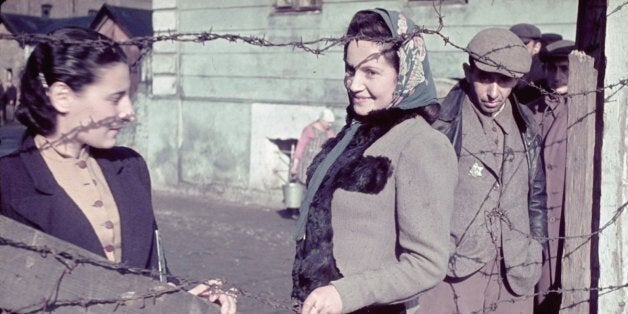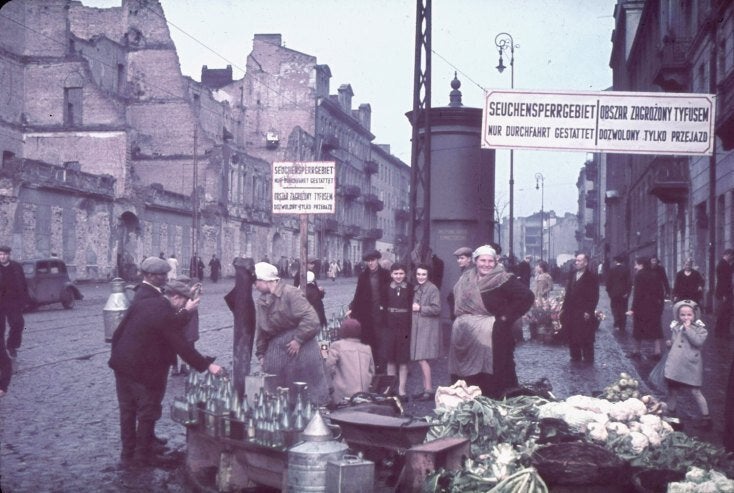
Until the German invasion in 1939, the Polish capital of Warsaw was a vibrant center of Jewish life, home to some 350,000 Jews and the second-largest Jewish community in the world.
But on Oct. 12, 1940, the German occupier issued a decree ordering all Jewish residents of the capital and surrounding towns to move into an area of 1.3 square miles, closed off by a 10 feet high wall. Estimates suggest more than 400,000 people were locked in the ghetto, according to the U.S. Holocaust Museum, making for an average of 7.2 persons living per room in the area. Living conditions were atrocious, with thousands perishing from hunger and disease.
Hitler's personal photographer Hugo Jaeger traveled to Poland in 1939 and 1940 to document the wretched conditions Jews lived in. The rare color photos, later published by LIFE.com, provide a glimpse into the squalor of Nazi-occupied Poland.
(SCROLL DOWN FOR PHOTOS)
Jaeger fiercely admired the Fuhrer and documented as many aspects of the leader's life as possible. He shot thousands of photos between 1936 and 1945, most of them in color.
The photo set of occupied Poland stands in contrast to the most of Jaeger's work, as it captures daily life inside an impoverished nation, rather than venerating powerful Nazi figures.
The photographs that Jaeger made in the German ghettos in occupied Poland, on the other hand, convey almost nothing of the triumphalism seen in so many of his other photographs. Here, in fact, there is virtually no German military presence at all. We see the devastation in the landscape of the German invasion of Poland, but very little of the “master race” itself.
In addition to Warsaw, Jaeger photographed Kutno, a smaller town located about 75 miles from the capital.
According to the Holocaust Research Project, about 8,000 Jews were living in Kutno by the beginning of the war. In June 1940, they were ordered to move to a new ghetto on the grounds of the “Konstancja” sugar factory.
The Kutno Ghetto was evacuated in the spring of 1942 and its residents sent to the Chelmo death camp. As of July 1942, residents of the Warsaw Ghetto were transported to the Treblinka death camp.
Take a look at the stunning photos in the slideshow below. See the full gallery, and read more about Hitler's photographer Hugo Jaeger, at LIFE.com.
